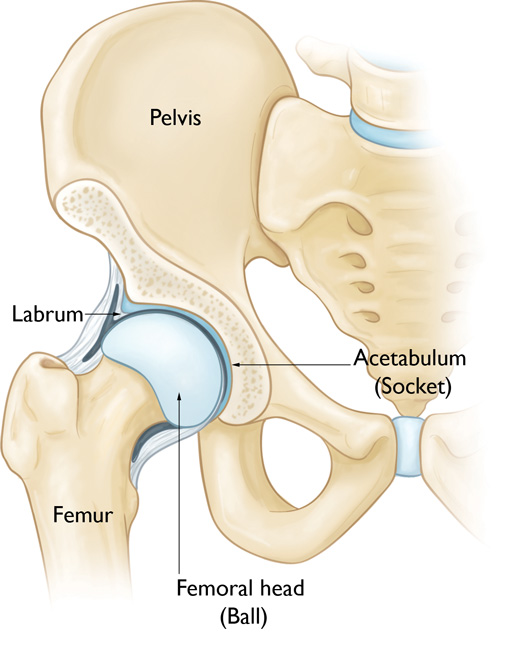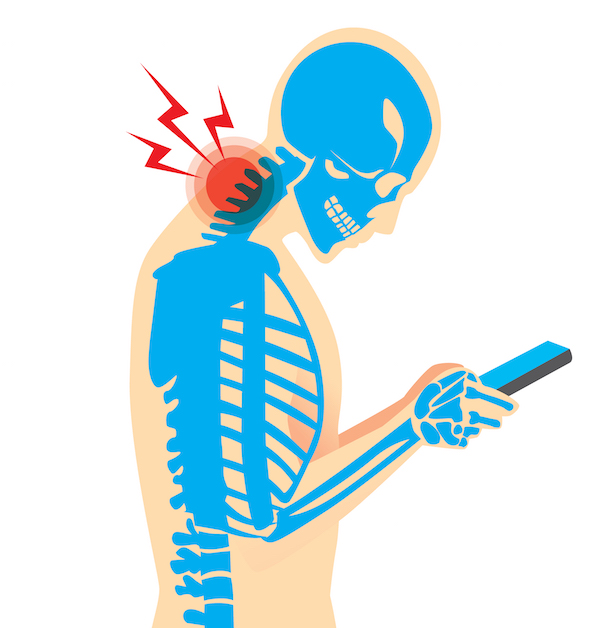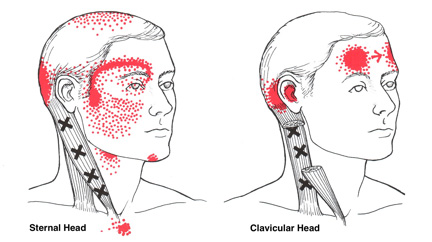
Lower Back Pain and the Hip
August 24, 2017
Rhomboids trigger points or “interscapular pain”
September 24, 2017What is SCM?

SCM stands for Sternocleidomastoid. It is the muscle that sits in front on both sides of the neck as shown in the figure. SCM is responsible for rotation of the neck to one side when acting alone, and forward flexion of the neck when SCM on both sides act together. It works together with other muscles of the neck, the Trapezius and Scalenes during side bending of the neck as well as with Scalenes during deep forced inhalation.
It may look innocent sitting there in front of the neck, most people are not quite aware of it; but it can be a headache… literally causing a headache!
Why is SCM so important?
SCM can cause tremendous amount of pain when containing trigger points and it is a very common site for trigger point development. Trigger points can occur in both parts of the muscle, the Sternal head and the Clavicular head either separately or simultaneously on both parts and can also spread to the opposite SCM on the other side of the neck.
Trigger points in the Sternal part can cause pain to spread behind and above the eye, around the jaw (TMJ), and the back and top of the head. Trigger points in the Clavicular part can cause pain over the forehead, around the eye, over the cheek, in the throat, molar teeth and when severe can spread to the opposite side of the forehead.
What are the symptoms and problems associated with SCM?
SCM trigger points can produce pain and variety of symptoms such as:
- Head and face pain
- Tension Headache
- Migraine
- Dizziness
- Vertigo
- Jaw Pain
- Ear Pain
- Pain in upper chest
- Visual disturbances: blurred vision, double vision
- Atypical Facial Neuralgia: pain localized to the cheek, jar and temporal region
What causes trigger points in SCM?
Most commonly trigger points develop in SCM when the muscle is overload or overstretched as well as keeping the neck in awkward positions for too long or forcefully and abruptly moving the neck, for example:
- Overhead activities: such as painting, climbing, overhead lifting and some gymnastics
- Forward-head posture: slouching with head forward ie when using phones or tablets
- Sleeping positions: sleeping on stomach
- Computer positioned on one side
- Holding telephones or mobile phones with shoulder on one side without using hands
Others include:
- Trigger points in Upper Trapezius muscles
- Scoliosis and other postural abnormalities
- Chronic cough
- Whiplash
- Stress
- Asthma
- Tight collar or tie
How can SCM trigger points be treated?
There are several ways to help treat trigger points including:
- Trigger point release (ischemic compression): applying deep maintained pressure directly over the trigger points.
- Dry Needling: a thin needle is inserted directly into the trigger points. Once the needle is inserted, a twitch in the muscle occurs. This causes the fibers to relax, relieving tension and spasm in the muscle, and breaking or deactivating the trigger points.
- Passive stretches to the SCM, Upper Trapziuz, Scalenes, Pectoralis and Suboccipitals. Each stretch held for at least 45-60 seconds.
- Post-isometric relaxation of SCM: actively moving the neck against resistance
- Postural advice and corrective exercises
- Muscle facilitation exercises: for Lower and Middle Trapezius and deep neck flexors.
- Foam rolling or trigger point ball
- Chiropractic joint mobilization/manipulation
So get your SCM checked when you’re suffering from headaches, facial pain or migraine-related symptoms.



